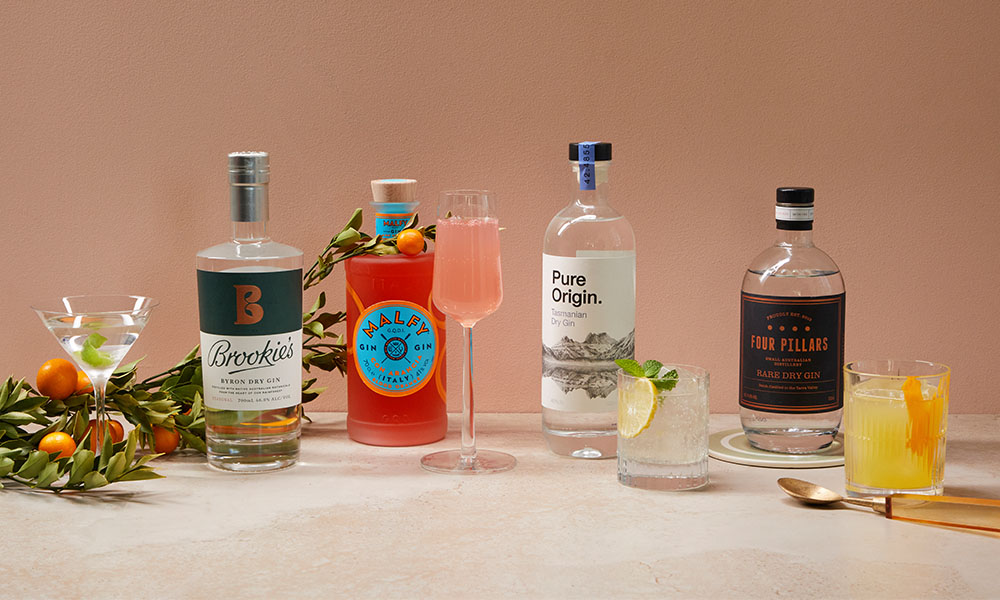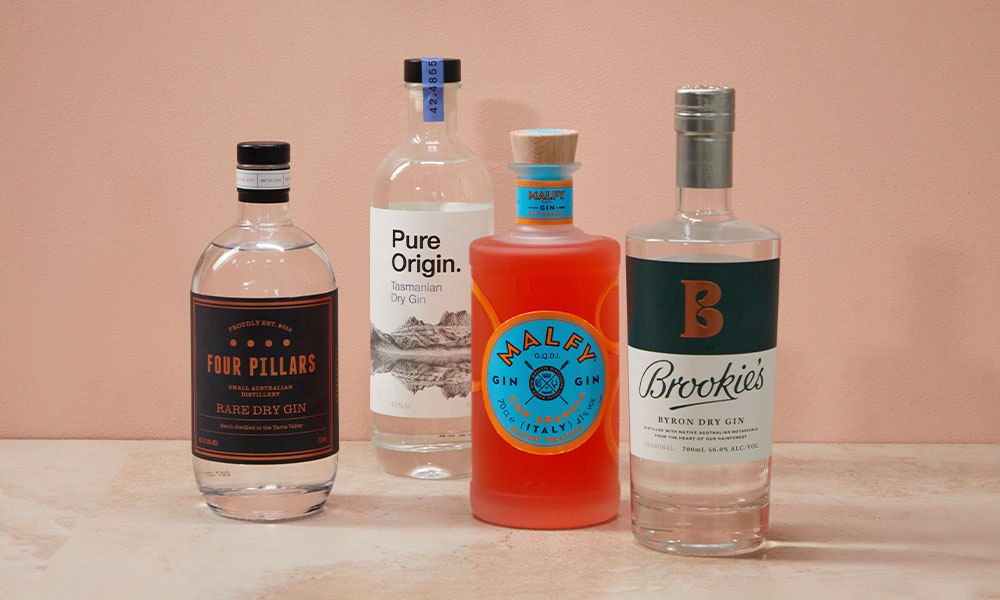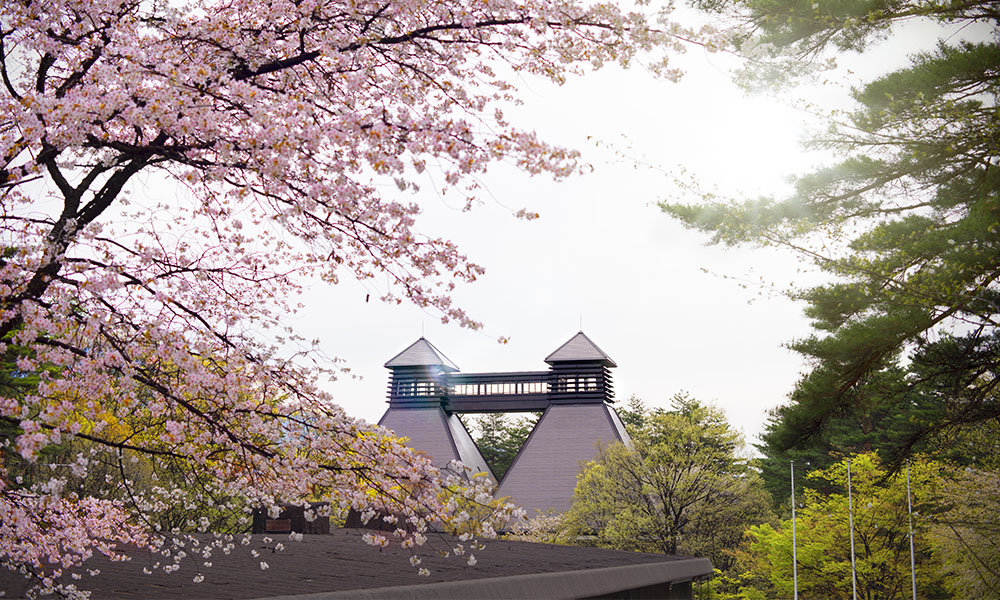- The Spirit
The many types of gin (and how to drink them)
Read Time 4 Minutes
Posted 16 Sep 2022
By Vintage Cellars

In Australia, the gin category is booming! We get you up to date with the many gin styles and what to drink gin with.
Previously thought of as an ‘old person’s drink’, gin has certainly cemented its cool status in recent years. Modernised by master crafters, the spirit in your gin-and-tonic has come a long way from the original version that was created by the Dutch. It went by the name ‘genever’ (also jenever or genièvre), but was shortened to gin as other countries adopted the liquor made with juniper berries. This particular ingredient is still required to this day for it to be classified and labelled ‘gin’.
Beyond the staple juniper berries – whose pine note presents in varying degrees across brands – gin flavours are endless. The distiller’s choice of gin botanicals, such as herbs, nuts, seeds and peels, influence the taste of the final result in a huge way … as does the way it’s made.

The history of gin
The Old Tom style of gin was one of the earliest versions ever created. It was made through a primitive process using base spirits that weren’t so neutral. For this reason they required extra sweetening to make them palatable. Today’s Old Tom gins have had a makeover. They’re now made with high-quality base spirits but stay true to the original in that you can expect them to be slightly sweeter.
On the flipside, Plymouth gin is a drier style, but similar to Old Tom gin in that it has historical significance. It was originally distilled in 1793 in Plymouth, England, and was a favourite of the navy at the time, who requested a more alcoholic version. They needed to be able to store the gin alongside gun powder without concerns about spillage. At a minimum of 57 percent alcohol, their gun powder would still light perfectly if soaked by the gin. This resulted in a whole new category known as Navy Strength gin. If you see Navy Strength on a gin’s label, you can expect a higher alcohol content.
The gin category has exploded far beyond these in recent years. So many gin styles are now available, from classics to cocktail favourites. To help you understand Australian gins like a pro, we’ve broken down the ones to know and how to drink them.

What is London Dry gin?
A classic gin style that’s associated with sophistication, perhaps due to strict perimeters around its production. To be considered a London Dry gin, all botanicals must be put in during distillation. Only water and a tiny amount of sweetener can be added after, causing the final result to taste drier than other varieties. These dry gins are great in martinis, which allow the flavour of this premium spirit to shine through. All you need to do is choose one to your taste. Delicious Australian interpretations of a London Dry are Brookie’s Byron Dry Gin, made with local rainforest botanicals, and Hickson Rd Australian Dry Gin, with a gentle saltiness that comes from Old Man Saltbush. The award-winning Poltergeist Unfiltered Gin is made in small batches at Tasmania’s famous Shene Distillery. While the Hickson Road London Dry Gin from Hickson House Distillery delivers a delicious citrus hit.
What other Australian and international gin styles are there?
In Australia, it’s exciting to see gins inspired by traditional Indigenous flavours – like Seven Seasons Green Ant Gin, which gets its lime and coriander notes from ants! But local distillers are also drawing from all corners of the globe to create the best gins in the world. Popular examples are Four Pillars Rare Dry Gin, which combines Asian botanicals with Mediterranean citrus for a refreshing modern result. There’s also the new Four Pillars Fresh Yuzu Gin, made with the citrus fruit yuzu – which is native to China, Tibet and Japan – along with a mix of other botanicals sourced locally and from around the world. Both of these crowd favourites go well in gin cocktails like a Tom Collins, or with a soda water and citrus garnish.
What are flavoured gins?
Yes, all gins are flavoured with juniper berries, but the thing that sets flavoured gins apart is a more dominant flavour that sings out above the rest. Flavoured gins are also often distinctly coloured, like the subtle pink of Malfy Gin Rosa, which has a fresh grapefruit flavour. For a refreshing drink, mix it with citrus juice or soda and grapefruit garnish. Or the zesty Malfy Gin Con Arancia, which is deep orange, reflecting the taste of blood oranges and perfect in a bellini.
What are sloe gins and gin liqueurs?
These sweeter gins are infused with rich flavours such as cherries, plums or berries (often sloe berries, hence the name) after distillation with other botanicals. Extra sugar is added and they’re usually lower in alcohol than other gins. Cape Byron Distillery is known for its Cape Byron Brookie’s Slow Gin, which is great sipped straight like port, while Four Pillars Bloody Shiraz Gin is infused with premium shiraz grapes. Sloe gins and gin liqueurs are perfect during cooler months in place of mulled wine, but delicious at any time of year. A popular summer option is Pimm’s No 1, which is often mixed into a cold jug of ginger beer or lemonade.
What are wine grape gins?
A fruity style of gin that’s taken off in recent years, wine grape gins are made using fresh grape juice or by infusing the gin with actual grapes from popular wine varieties. A leader in this group is Four Pillars Bloody Shiraz, which was created by macerating grapes with the gin for eight weeks. It was released as a limited-edition product in 2015, but it proved so popular it became part of Four Pillars’ standard range. Drink it with a good tonic and lemon or grapefruit over ice.
- The Spirit
- View More Posts The Spirit








